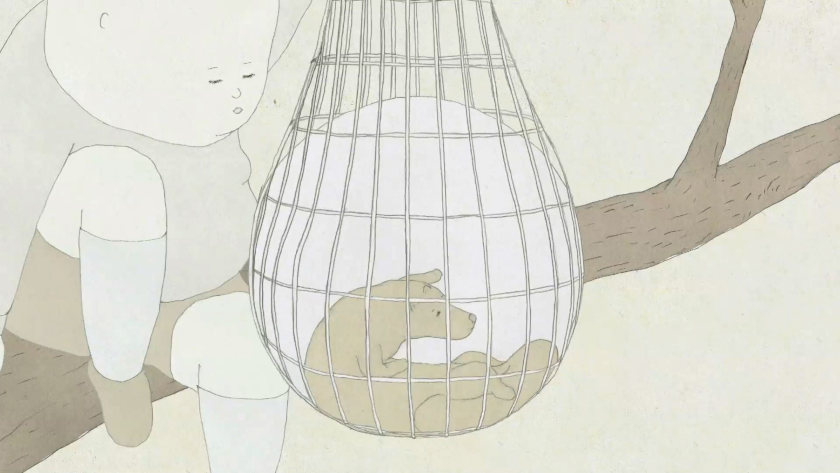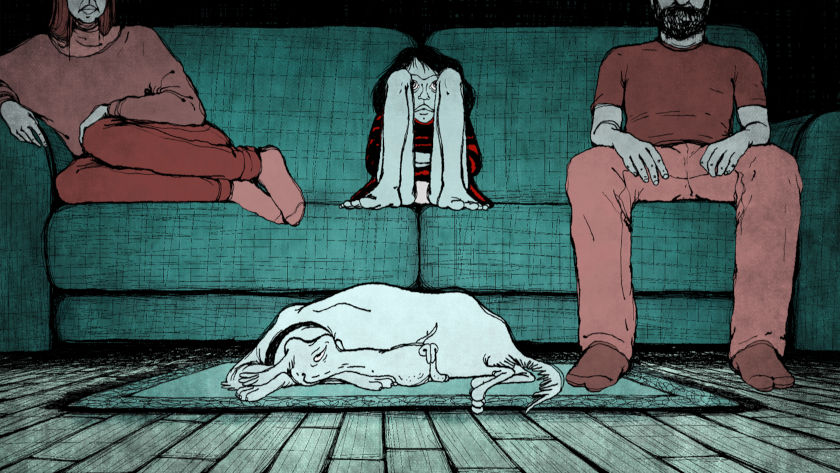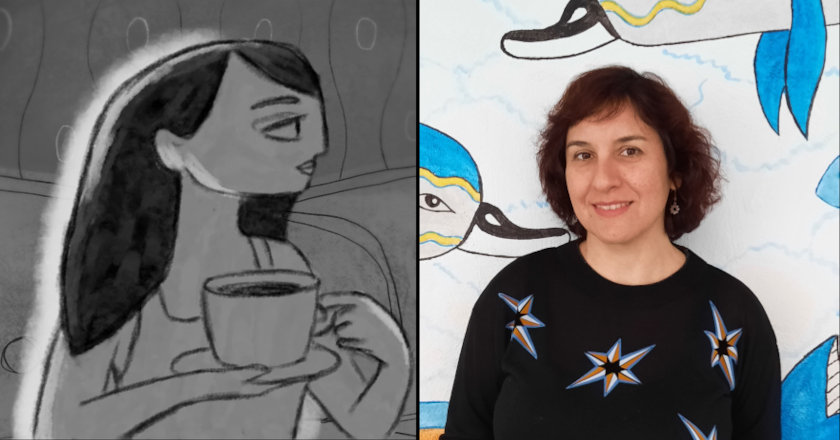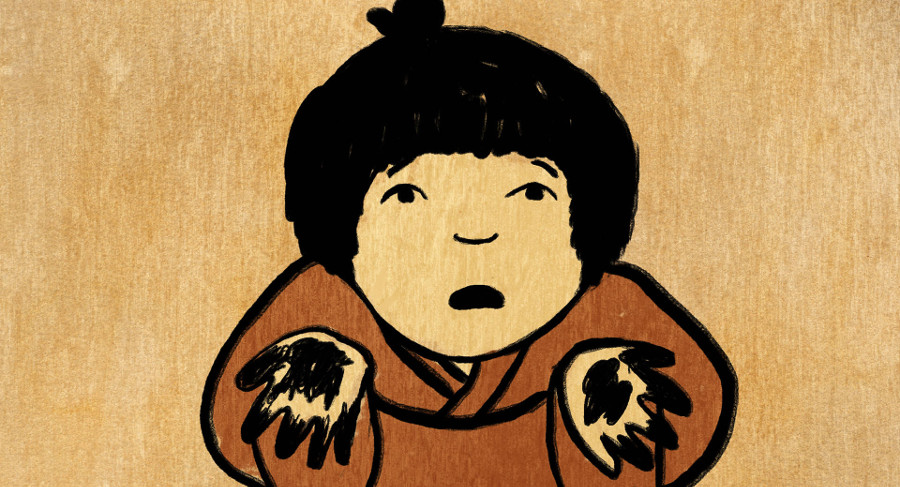'Crab Day': Interview with the BAFTA-nominated Animation Director Ross Stringer
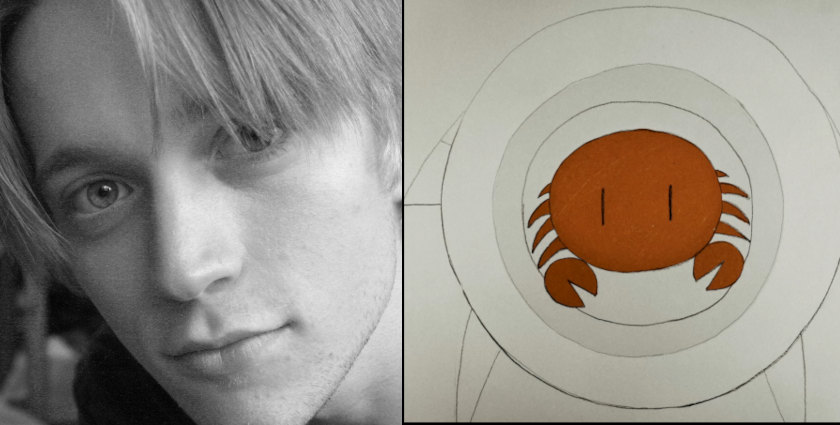
Norfolk-born UK animation filmmaker Ross Stringer navigates the field from experimental filmmaking to animation narrative (of the indie short). His student animation film (an NFTS film) 'Crab Day' tackles the expected gender stereotypes and the coming-of-age rites for its male specimens, with the starting point of a boy having to kill his first crab.
The animation short was one of the three BAFTA-nominated animation shorts (BAFTA Awards to be handed out on 18 February 2024). Ross Stringer talked to Zippy Frames.
ZF: Congrats on the BAFTA nomination! 'Crab Day' straightforwardly tells its story, from beginning to end. Does the story have a personal focus as well?
RS: Yes, it was directly inspired by my hometown of Great Yarmouth and its fishing heritage. It’s quite a direct translation of my relationship with this town and also my dad. The idea was encouraged by my memories of fishing with my dad and the first time I killed a fish. I’d always seen it as one of those rituals that supposedly make you into a man. For me, the film is an expression of my experiences with masculinity and how I’ve learned to define it within my own life.
ZF: Aleksandra Sykulak wrote the film's script. How did you collaborate with her?
RS: Aleks and I were paired up during our first film project at the National Film and Television School. We were meant to come up with story ideas based on paintings that we viewed at the Tate Gallery. We were still working remotely at the time due to the pandemic, so instead we were browsing the online gallery. We’d found we both had an interest in seaside-themed imagery, amongst other things. Particularly, Alfred Wallis’ work and a monster crab painting by Oskar Kokoschka come to mind. From there we discussed themes surrounding masculinity, queerness, old fishermen, etc. To us, the crab became this symbol of the hard-shelled man with a soft inside, which sort of ended up being the inspiration for the dad’s character traits and wide-set appearance. Throughout production, we had discussions and meetings a lot about the story. Writing a physical script didn’t always seem to be necessary or the best way to progress, so we tended to avoid it. I’d often draw thumbnails for ideas as we talked about them, and then we’d go from there. Seemed like a natural way of doing things for a film with no dialogue.
ZF: This is not your first animation short, yet 'Crab Day' seems to be a long way from your experimental 'Trunk Calls'. How did you decide to tackle a very narrative story instead?
RS: I never really knew if it was what I’d end up doing, though I’d suspected it would happen based on the films that tend to come out of the NFTS. I’d gone into the school hoping to find a middle ground between experimental and traditional narrative, which I think I did, but maybe more the latter. I always try to do something I’ve never done before, so I felt like I had to try it because why not? I have to admit, I had a lot of fun going back to aimless experimenting after I finished the film, but I’ve not lost my interest in storytelling - and the school taught me a lot about how to tell a good story. I think I’ll just do both, and keep things fun.
Watch the 'Crab Day' trailer:
ZF: You eliminate backgrounds, and you go on for a very minimalist character design, making the film look like kid's drawings. Was that intentional and was it your idea all along? Or did you have to go through many design character stages to find the film's style?
RS: I was definitely going for a kids drawing mixed with a little bit of cave painting look and feel. I love anything that gets you into a primitive or naive mindset. It helps to convey the boy’s perspective too. I kept going through my old drawings from when I was a kid and kept laughing but also thinking wow these are interesting. There’s no sign of uncertainty in them, it’s just raw expression. Equally, I loved looking at cave paintings. Some depict animals as giants, which emphasizes their cultural significance - this being the inspiration for the giant crab of course. In both of these things, there’s rarely any concern for background elements, just purely the essential. Saying all this, it took me far too long to realize this is what the film needed and I spent over half my time during production scratching my head over what technique to use... It went from, pencil, to paint, stop mo, CG, and on and on; eventually landing back on pencil and paper again.
ZF: Relatedly, how did you animate? Did you draw on paper or the computer? Let us know a little bit about your animating process.
RS: It was all drawn with Blackwing pencils (my favourite) on cheap animation paper, or painted on cardboard for the crab colour. This was all photographed under a rostrum and then composited in After Effects, where I placed the drawings in a composition and used a digital camera to create some of the sweeping/moving shots. I’ve done a version of this in Maya too but for this film, it would’ve been maybe a bit overkill and time-consuming. It’s a nice and simple process, I think in hindsight I’d prefer line testing under the camera and then scanning the images for the final thing, but I guess it depends on what kind of film you’re making.


ZF: How important is everyone else's contribution to the film (your producer, your composer, etc.)? Do you take feedback from other creative people, or do you prefer your vision from beginning to end?
RS: There’s definitely a standard of film that is impossible to make on your own with limited time, so yes everyone’s contribution was incredibly valuable to the film. You also get people who can do things in ways you’d never think, which adds so much. I think you definitely end up with a core team who really get the project. My editor, Donya, was so good at understanding what the film needed when I’d become blind to it, she propped me up when I needed it. My writer and producer, Aleks and Bart, were always in the edits and writing room with me. Matteo, my composer wrote the most amazing music, and rerecorded it in a different genre in the last week or so of production when I’d asked, and I will always thank him for it (sorry Matteo). We had sound designers who jumped in last minute when Simon was working on another film. I could go on, there’s a lot to be grateful for there. My job was just to make sure the film said what we wanted it to, how it got there was up to the whole team.
ZF: Would you consider your film a cry against established gender stereotypes or a more personal story?
RS: Can it be both? I enjoy that so many people have related to this story in one way or another. Yes, it’s personal but also presented in a universal way. The Crab is a part of the boy that he’s hiding from the world and it could represent many things. I think everyone goes through this process of figuring out where they fit in their community and the world around them, and that’s why it's so relatable.
ZF: What was the film's schedule, considering it is a student (NFTS) film?
RS: If you include all of the development time, the film took roughly fourteen months to make. Also, we’d come up with the film concept a year prior to production so we’d sat with it for plenty of time. I didn’t start animating anything that made the final cut until October/November which was 4 months before our deadline, which was maybe more my method of scheduling than the school’s...
An excerpt from 'Crab Day'
ZF: Did anything trouble you creatively in the making of the film, apart perhaps from the schedule?
RS: I definitely suffered from too many chefs in the kitchen. After a while, you become a bit numb to feedback since it’s quite constant. There are tutorials at least once a week and regular review screenings scheduled for the cinema, and everyone chimes in. It was an irreplaceable source of feedback and outside opinions, but it takes a while to learn when you need it and when you just need to crack on with the film. One person might tell you the completely opposite opinion to another, so you really have to learn to trust your own decisions.
ZF: How do you perceive the BAFTA nomination, apart from personal satisfaction? Is this a chance to move into more animated artistic shorts, an industry path, or both?
RS: I don’t really see it as a direct path into anything in particular because I’m happy to explore whatever comes my way as long as it’s interesting enough. I imagine it is a bit of a magic key that opens doors, but I have no real preference in the door. I love making films with people, and I also love animating independently. I found an unexpected interest in performance animation last year, creating visuals for music, so even that is an avenue I want to explore. Always open to ideas, or collaboration, tell the world!

Crab Day (2023)
Director - Ross Stringer | Writer - Aleksandra Sykulak | Producer - Bartosz Stanislawek | Cinematographer - Tom Simington | Production Designer - Olivia Clarke | Production Manager - Chloe O’Donoghue | Editor - Donya Maguire | Supervising Sound Designer & Dubbing Mixer - Simon Panayi | DFX Supervisor & Colourist - Aiden Tobin | Composer - Matteo Tronchin | Animation Assistants - Miriam Fox, Tommy Howlett, Milda Kargaudaité, Yandong Su, Megan Earls | Sound Effect Editors - Siim Skepast, Jean-Marc Eck | Additional Foley Recording - Lewis Goody | Production Assistant - Carl Mason




